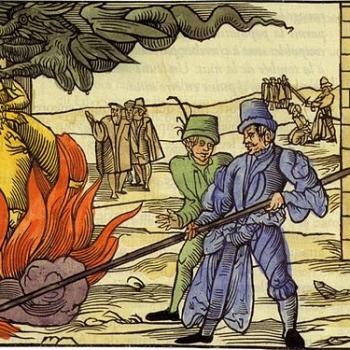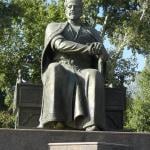In the last parts (see here and here), we introduced the thought of Childs (thanks to Mr. Shepherd) and we offer a review of his initial concern for the state of Pauline studies and theological hermeneutics. Now, we will venture into the argument that Childs develops regarding the actual canonical shaping of the Pauline corpus.
He is clear from the start that the canon holds the key to how to interpret Paul: ‘the formation of a New Testament canon was, above all, a hermeneutical exercise in which its anonymous apostles and postapostolic editors collected, preserved, and theologically shaped the material in order for the evangelical traditions to serve successive generations of Christians’ (62).
How exactly does this work? Childs focuses largely on the ordering of the Pauline corpus with Romans at the beginning and the Pastoral Epistles (PE) at the end. As for Romans, C. follows the general conclusion of Bornkamm on the Roman debate reading the purpose as a ‘historical testament to Paul’. Thus, C. reads Romans as such:
…Romans serves to present Paul’s mature, systematic theological reflections at the end of his missionary career in which he reviewed many of the burning, contingent events of his churches (192).
C. finds it fitting that the shapers of the canon assigned it an ‘introductory role’ to Paul, where it became ‘the canonical norm in the light of which the other letters were to be intepreted’ (117). In a sense, when 0ne gets an inchoate theological thought from Paul in the more contingent letters (like Galatians or 1-2 Corinthians, one can turn to the same topic in Romans for a more mature reflection. Thus, C. can conclude: ‘Romans provided a coherence to the contingencies of his earliest letters without sacrificing their particularity’ (192).
I have many concerns with C.’s perspective here! First of all, C. seems to have resolved the Romans debate without sufficient account of the many voices that find more local contingencies in Rome than Bornkamm did. Specifically, I wished C. had dealt with the views of Francis Watson, Stanley Stowers, Douglas Campbell, William Campbell, Mark Nanos, Mark Reasoner, etc… The ‘historical testament’ view seems a bit overly simplistic in light of new research. If a case can be made, it must reckon with the above mentioned scholars.
Secondly, C. is building a lot on the ordering of the Pauline corpus. While I have no problem with that per se, C. is relying on internal evidence; that is, what it seems like is being communicated from a literary and canonical perspective through the ordering of the canon. As a guess, his guess is fine. But do we have patristic writers talking about the correct ordering of the canonical Pauline letters and, more importantly, why the corpus should be in a particular order.
Another major argument from C. is the funtion of the Pastoral Epistles. C. recognizes the PE in the canon as a ‘shift from an active to a passive Paul’ (72). By the way the shapers have placed it last, one can see how Paul’s teachings ‘have become the medium by which others are to confront falsehood and heresy’ (73). Thus they teach the reader how to apply Paul’s messages from his own time to ‘future crises’ .
The Pastorals serve as a concluding valorization of Paul as the church’s doctrinal model (235)
Again, the concern here is that C. provides no clear external evidence to prove his case, though the move from an active Paul to a passive one (the passing of the torch) seems to fit well enough.
Two Additional Points
In the course of C.’s study, two concerns of his emerge prominently (with many other smaller points). One regards his attitude towards postmodern and charismatic hermeneutics. Though he is willing to side with many on the issue of de-throning a purely historical approach to Paul, he is not happy with a ‘any meaning can be found’ approach that fails to take stock of the normative role of the canon and the implications of its shaping of the Pauline documents.
Secondly, C. finds the ‘apocalyptic’ intepreters of Paul (prominently Kaesemann) to be wrong in their attitude that the ‘real Paul’ was volcanic and fiery, while the canonical Paul is too formalized, subdued, etc…
Conclusion
I enjoyed reading Childs as an outsider peering into the window of Pauline studies and tapping on the glass. I think he ignores some really important research, but he is not too dogmatic in his approach. I would have liked, of course, some patristic evidence and clues for how to understand the purpose and function of the particular way the canon was shaped. Childs puts a lot of eggs in the basket of book order. Romans is first. PE are last. Therefore….
I don’t think Childs’ model is actually going to do much for intepreters of Paul except to think more about the canon (and maybe that is a good start for Childs?). He offers no clear methodology for what to do as a result of looking at the canon. Also, will Pauline scholars really read the rest of Paul through the grid of Romans?
Perhaps Childs will succeed in unifying the corpus so that the PE and Ephesians/Colossians are not treated as ugly step-children. Maybe they will be rehabilitated. Maybe not.
It is a sad fact that this is the last word on this subject from Childs. He is a perceptive reader of texts and his impact on biblical theology is weighty. This book will cause Pauline scholars to at least pause and think.















